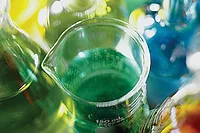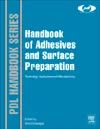Q&A About Polyurethanes
A lot of recent discussion has focused on making construction adhesives and sealants green by eliminating formaldehyde, plasticizers or solvents. Are there similar alternatives for the coatings that are often placed on top of these types of products?
Green alternatives do exist for coatings as well. Building decision-makers often investigate the sustainability of macro-components of the built environment such as concrete, metal, wood and lighting. However, many intelligent methods are available that enable minor components such as coatings to greatly impact the overall sustainability of a structure by improving the indoor environmental quality, lighting efficiency, renewable content, graffiti resistance or long-term durability of major design components.Waterborne coatings products and plant-derived natural oil resins have gained in popularity due to increased environmental awareness and the polymer industry’s efforts to quantify the carbon footprint of many ubiquitous industrial, building, and construction products. For example, early water-based polyurethane coatings required the end user to compromise on physical properties, as compared to solventborne technologies. Now, high-performance, two-component waterborne (2K WB) polyurethane coatings are offered that meet or exceed the durability and weatherability of their old solventborne analogs while touting less than 10 g/L in volatile organic compounds (VOCs) and very low odor.
Similarly, many natural oil polyol (NOP) resins or additives were used to supplant their petroleum counterparts but often compromised at least some of the desirable traits needed for the final end-use application. Current NOP-based floor coating technologies are being commercially installed that have > 35% renewable content, high durability, no VOCs or solvents, low odor, and no plasticizers or heavy metal catalysts. These types of coatings can contribute to a winning hand when an architect, engineer or building owner is designing with a focus on sustainability and green building practices.
– Steven Reinstadtler
Our company fills expansion joints in concrete floors with an epoxy caulk before applying a floor coating. The epoxy caulk must be heated with a torch before cutting the material flush with the concrete. We have heard that polyurea sealants do not require preheating before cutting. Can you explain the advantages and disadvantages of the different technologies?
Expansion joints in concrete are often filled with a moderately hard resin to reinforce the edge of the joint, to create a flat surface for subsequent coating, to prevent liquids from draining into the joint, and to improve safety. Many years ago, these joints were filled with a two-component epoxy resin system. The epoxy resin had a long gel time and cured to a very hard, brittle, low-elongation material. Because of the epoxy system’s long gel time, the excess resin was often cut flush with the concrete the next day. Heating of the epoxy resin with a torch was often required to soften the material before cutting. The epoxy resin’s cure rate also varies depending on the ambient temperature.Today, polyurea sealants are often used to fill joints in concrete. The two-component (1:1 by volume ratio) polyurea technology has many processing and productivity advantages, including fast cure rate, fast gel time, moisture insensitivity, and the ability to cure at a low temperature. The fast gel time and fast cure rate allow polyurea sealants to be cut flush with the concrete in around 20 minutes. Polyurea technology is also used in low-temperature applications where other technologies will not cure.
Cured polyurea sealants feature exceptional physical properties. Polyurea sealants have the required hardness and strength to protect the joint, but they also incorporate flexibility, high elongation and good adhesion to concrete.
The original versions of the polyurea sealants are based on aromatic diphenyl methane diisocyanate (MDI). These aromatic resins typically discolor over time. Newer versions of the sealants use low-monomer-content aliphatic diisocyanate prepolymers and have dramatically improved UV resistance.
– Jay A. Johnston, Ph.D.
For additional information on the topics addressed or to ask another question, e-mail jeff.dormish@bayer.com with the subject line “Polyurethane Q&A.”
Any views or opinions expressed in this column are those of the author and do not represent those of Adhesives & Sealants Industry, its staff, Editorial Advisory Board or BNP Media.
Links
Looking for a reprint of this article?
From high-res PDFs to custom plaques, order your copy today!







